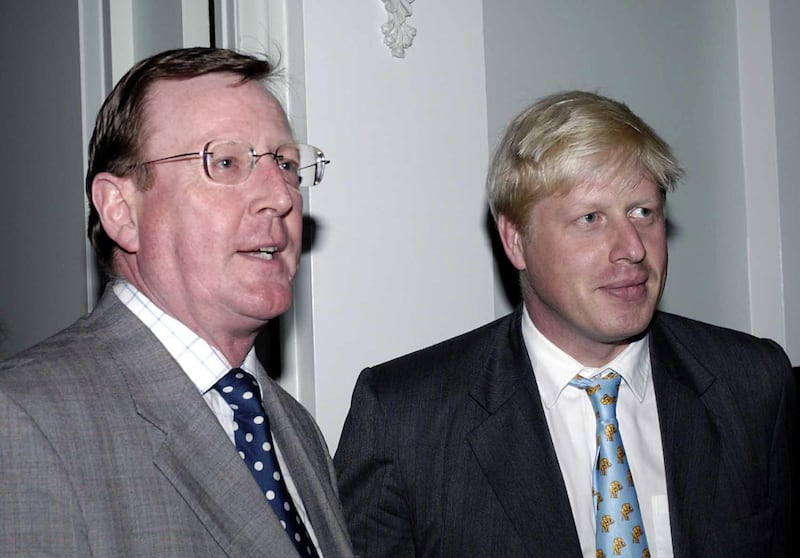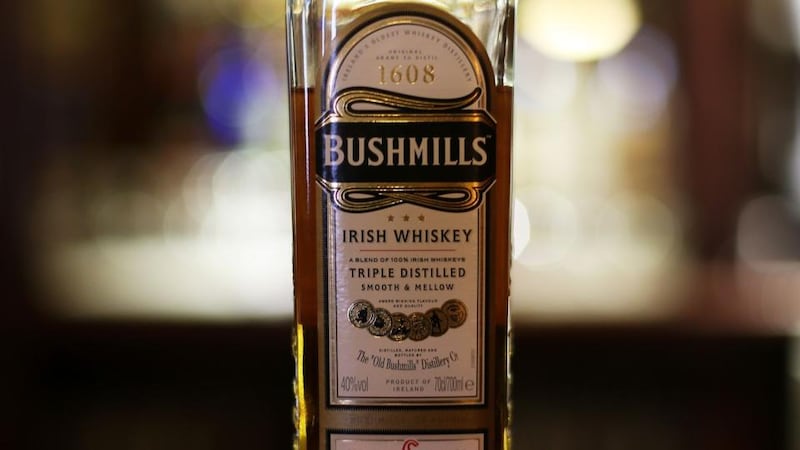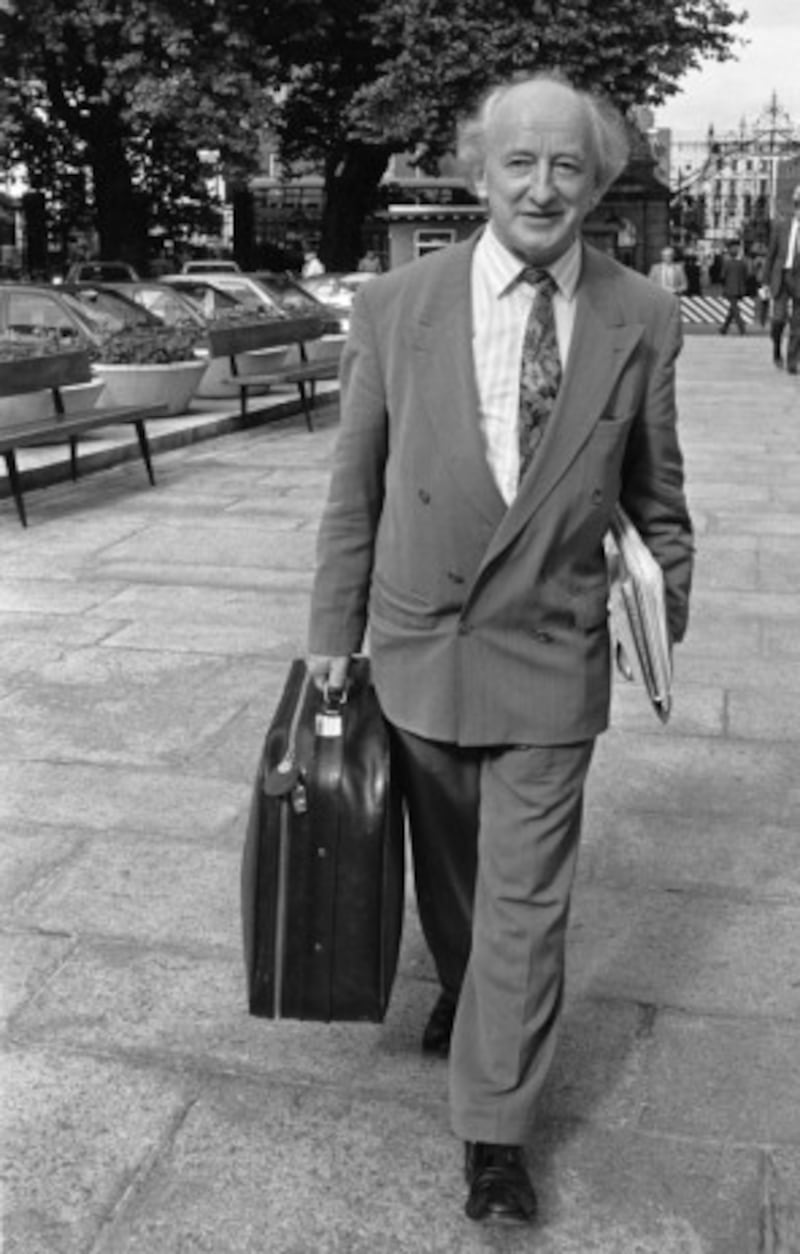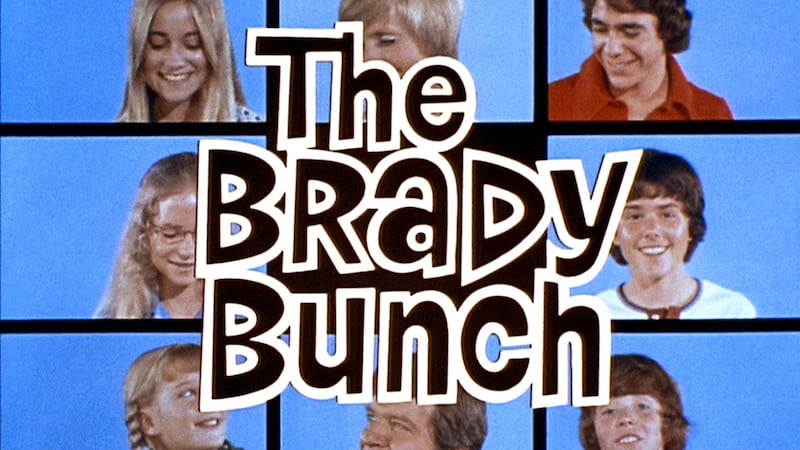Britain’s Prince Andrew predicted a surge in electoral support for Sinn Féin in the Republic after the 1998 Belfast Agreement contrary to Irish government’s belief that the unpopularity of IRA violence would stymie the party’s growth.
Declassified state files show the brother of the future King Charles discussed Northern Ireland with an Irish diplomat at reception on the HMS Montrose, a British frigate on which Prince Andrew had served during the war with Argentina, which had docked in Boston.
In a memo on July 24th 1998, Orla O’Hanrahan of the Irish consulate in US city said Prince Andrew suggested the Republic might soon rejoin the Commonwealth “an idea which he thought had merit”. She also had quoted him as saying that “the Irish would be laughing on the other side of their faces” were there to be an increase in support for Sinn Féin in the Republic, “a prospect he thought likely”.
At the time, Sinn Féin had just one seat in the Dáil - Caoimhghín Ó Caoláin – and it was the minority nationalist party in Northern Ireland, with the SDLP winning most first preference votes of all parties in 1998 Assembly elections.
State Papers: What we learned, from details of Boris Yeltsin’s Shannon no-show to Ireland’s lost moon rock
Documents on Irish Foreign Policy (Vol 14) 1969-73: The North, above all else, required the Department of Foreign Affairs to up its game
What do the 1994 State Papers reveal?
Bob Geldof warned Tony Blair that failing to support Africans at home would mean upheaval in West
John Bowman has the story on Prince Andrew’s prescience in an analysis on this year’s release of confidential government files in Dublin.
Boris Johnson’s grasp of the North failed to impress Irish officials:
Former UK prime minister Boris Johnson urged Ireland to adopt a “hard egg” approach to the Northern peace process in an analysis that failed to impress Irish officials.
Mr Johnson claimed the IRA were close to defeat in 1996, adding “let them use the bomb and the bullet” and that the British would “beat them eventually”.
A confidential Irish government document from 1996 details a “slightly surreal” discussion an Irish official had with Mr Johnson who was then deputy editor of the Daily Telegraph newspaper. The conversation took place on February 13th, four days after the IRA London Docklands bombing, which killed two people and injured more than 100 others.
“Johnson told me that there is a strong view at editorial level in his newspaper – although he avoided saying so I believe it is the view of his editor Charles Moore – that the Prime Minister (John Major) must have done something wrong in his address to the House of Commons on Monday because the Irish government had reacted so warmly to his statement,” the Irish official wrote.
“More worryingly, Johnson argued for what he called a “hard egg” approach,” the document continued.

The official said he had “pointed out” that a hard egg approach “can only lead to broken heads”, adding: “Implicit in Johnson’s argument was ‘let the nationalists go to hell’.
“He claimed that the IRA were in 1994 at the point of defeat, I asked him to name one serious security source who would back up that statement. Surely the lesson of the last 25 years is that there is no security or military solution. This was not an argument he was prepared to accept.”
The Irish official spoke to several other journalists and politicians in London, observing: “The number of Tories who take a serious interest in Northern Ireland is very low and the prevailing mindset for most Tories is one of resolute anti-terrorism and a hatred of Gerry Adams rather (than) pro-unionism.”
Boycott of Bushmills whiskey exposed Irish-American bias:
An Irish-American campaign to boycott Bushmills whiskey in 1996 was extended the following year despite a recommendation from the head of one of the organising groups to call it off.
The boycott began in San Francisco through the John Maher Irish-American Democratic Club and it was quickly adopted by the city’s mayor Willie Brown who poured a bottle of Bushmills down a sewer.

The boycott was supported by the United Irish Societies (UIS) of San Francisco, the umbrella group for all Irish organisations in the city. It came after figures showed that less than 10 of the 108-strong workforce at the distillery outside the village of Bushmills in north Antrim were Catholic.
Defending its employment record, Bushmills’ owners Irish Distillers - then based in Co Cork - said that job turnover in the distillery was very low and that Bushmills was in an overwhelmingly Protestant area. This stance was endorsed by SDLP leader John Hume who wrote to mayor Brown arguing that the boycott was misguided.
UIS chairman Hugh Duggan accepted an invitation from distillery management to see for himself how the company operated and visited Ireland in January 1997 to take a look.
Mr Duggan later called for the boycott be lifted but he was overruled and a motion to continue the boycott was carried without a vote at a meeting of the UIS on March 27th, 1997 in San Francisco.
In a memo to Dublin, then Irish consul-general in San Francisco Declan Kelly said it was “obvious” Mr Duggan was not going to succeed in having the ban lifted. “The overwhelming view of the membership is that Duggan was wrong to go to Bushmills,” Mr Kelly added.
Ireland was wary of taking sides between Russia and Estonia over IRA ‘fake news’ story:
Ireland pushed back against being drawn into a row between Russia and Estonia over allegations the Baltic state was involving in supplying Soviet arms to the IRA.
Declassified files reveal Estonia gave a confidential briefing to the Irish authorities in 1996 to assure them there was no state support for arms supplies to the IRA – and to ask Dublin to issue a statement to that effect.
Estonia blamed Moscow for fabricating the claims – Russia under its president, Vladimir Putin, has a long record of disinformation campaigns targeting former Soviet states.
The IRA-Estonia story originally ran in Russia’s TASS news agency, crediting FSB (former KGB) sources for the information. The report claimed the IRA was securing former Soviet arms via the extremist Estonian group Kajtselite, which it directly linked to Estonian intelligence.
Ireland’s ambassador to Russia, Ronan Murphy, told colleagues he had been personally approached by the Estonian ambassador to Russia who was calling a press conference to refute the claims. “He said that it would be helpful if the Irish government were to confirm that we do not believe that the Estonian authorities are involved in supplying arms to the IRA.”
Irish officials said in correspondence they were cautious about such an approach: “A factor to take into account, even if we were in a position to say something, is that we would be publicly involving ourselves in a row between Estonia and Russia at a time when the temperature in these countries’ relations is already high.”
A handwritten note to the final report was a recommendation that Ireland “avoid saying anything” in respect of the row.
Demographic trends that could lead to a united Ireland were miscalculated:
UK officials got their calculations wrong in 1993 when they forecast it was “likely to be 50 years” before the number of Catholics matched Protestants in Northern Ireland.
In fact, it took less than 30 years for the Catholic population to overtake the Protestant one. Census 2021 figures published last September showed a total of 45.7 per cent of people in the North are either Catholic or from a Catholic background, compared to 43.5 per cent who are Protestant or from other Christian denominations.
Department of Foreign Affairs records from 1993 show the UK population forecast was based on the view that the higher fertility rate among Catholics would get “slower and slower” as they came more in line with European norms.
As to whether demographic change would lead to a united Ireland, Edgar Jardine, then with the North’s Policy Planning and Research Unit, pointed to surveys showing that while Protestants had unequivocal views on Irish unity “Catholics were far more nuanced in their response, with up to one third expressing greater or lesser degree of disfavour,” according to the file.
“Jardine posited that, even within the situation of X years from now when there is a Catholic majority, this in no way would guarantee a majority for a united Ireland.”
[ British ruled out Catholic voting majority in North ‘until at least 2050’Opens in new window ]
De Klerk left Dublin empty-handed after unconvincing apartheid-era pitch:
South Africa’s last apartheid president FW de Klerk tried to persuade taoiseach Charles Haughey to lift Ireland’s ban on the importation of fruit from his country on the basis it would benefit thousands of “mainly black” workers.
Mr de Klerk made the unconvincing pitch on a visit to Dublin in 1991 which was itself controversial as Ireland did not have diplomatic relations with South Africa.
Then Labour foreign affairs spokesperson Michael D Higgins was among those who opposed the visit, saying that South Africa should continue to be frozen out until “the apartheid system is dead”.

Defending the trip, Mr Haughey and minister for foreign affairs Gerry Collins argued that Mr de Klerk was playing “a considerable role” in ending apartheid. However, there was no budging on Ireland’s ban on the importation of South African goods, which can be traced back to the famous strike by Dunnes Stores workers in 1984.
The visit came a year after Nelson Mandela had been released from prison but the apartheid regime did not formally end until 1993 when Mr De Klerk and Mr Mandela shared the Nobel peace prize.
British submarine dragged Irish trawler backwards for a mile in ‘embarrassing’ incident:
The British Navy tried to force the skipper of an Irish trawler to return sonar equipment snagged in his net after his vessel had been towed backwards for a mile by a submarine.
A secret department memo dated September 13th 1990 outlined concerns over the potential embarrassment of British legal action being triggered for recovery of the towed sonar array.
The incident occurred at 7.20pm on September 12th 1989 some 40km east of Skerries when an Irish trawler, MV Contestor, alerted the Shannon-based Marine Rescue Centre.
The trawler was fishing in the Irish Sea and said its nets had snagged on some submerged object. The skipper raised the alarm at 8pm to say his vessel was now being towed backwards - something which continued for a mile until he managed to break free.
A subsequent examination of its nets revealed a military buoy, later identified as a sonar array from a submarine.
Irish officials raised serious concerns over the incident with Britain. A decade earlier an Irish trawler sank after an incident with a British submarine.
“This latest incident will certainly give rise to serious anxiety on the part of fishermen and we ask you to take all possible steps to ensure that there will not be a recurrence,” a department note to the British embassy advised.
Department of Foreign Affairs officials were notified on September 15th 1989 that the fisherman had commenced legal action for salvage. However, the following year Ireland was made aware that Britain had obtained private advice from an Irish lawyer that they could claim “State Immunity” – which would prevent salvage being claimed and would force the return of the sonar array.
The Department of Foreign Affairs advised the British embassy that a discrete negotiated settlement would be the best course of action.
A brutally candid RTÉ camera crew told Americans to “f*** off”:
A Californian-based couple visiting Salthill in 1978 were treated to some salty language when they happened upon an RTÉ crew which was filming a local band on the promenade.
According to a letter retained by the Department of Foreign Affairs, a Dr William Curtain inquired from the “girl member of the unit” if the film would be shown outside of Ireland.
The letter states that the exact wording of her reply was “will you f*** off, we don’t want sh*** like you around here!”
The doctor’s father-in-law complained to both the director general of RTÉ, and to the minister for foreign affairs about the experience which he said had been “very painful for his daughter and her husband, who are, in many ways, splendid representatives of Ireland”.
He proudly informed the minister that the couple host an annual St Patrick’s Day function in their home which has become the “social event of the year”.
Officials in the department promised to bring the letter to the attention of minister Michael O’Kennedy on his return from official duties in Japan.
Contact was made by the department with RTÉ about the incident, and officials were told that the matter was “under investigation” but that enquiries to date suggested that the circumstances were not as stated in the letter.
Children in the 1970s spent more time in front of screens than anything else:
A fear that children are spending too much time in front of screens long predates the advent of the smartphone.
In 1976, concern over whether the availability of television in Ireland was corrupting the minds of the young prompted the Irish Broadcasting Review to carry out a study on how much time Irish 11-year-olds spent watching the box.
The journal, which was compiled three times a year by RTÉ with outside contributors, carried out the study in June of that year in advance of the advent of the second channel in Ireland, RTÉ 2, which was launched in 1978.
The results showed children spent a longer time watching television than any other leisure activity, a total of 267.1 minutes (4 hours and 27 minutes) over the space of three measured days.
Their favourite programme were Starsky and Hutch and Hawaii Five-O for the boys and The Brady Bunch for the girls. The Riordans, a soap opera which presumably their parents watched, was the only home-produced programme to feature in the overall top 20.

Watching television was not the only leisure activity. Outings with other children accounted for a further 234.2 minutes while just “lying about” took up 181.3 minutes.
One of the things that was measured was the contrast between the viewing habits of children who lived in one channel land - those who only had RTÉ and could not get a reception for British TV stations - and those who did. At the time most of those households in the Republic close to the Border and also along the east coast near to Wales could get BBC and ITV along with RTÉ.
Surprisingly, children who had access to multi channels watched less television than those who had only one channel.
Less surprising, boys favoured crime/detective series and girls liked them too, though not as much.
“Two issues arise from this. One is the voice of such programmes and their possible effects on child-viewers. The other is that despite the often late-evening scheduling of such programmes, children still managed to view them. Parental controls is under query here,” the report concluded.
Coverage of the release of state papers in Dublin and Belfast continues this week in The Irish Times at www.irishtimes.com/tags/state-papers/ and in print, including:
Thursday: The 1992 X case, Sinn Féin strategies and the human cost of the Troubles
Friday: Marie Coleman of Queen’s University Belfast on the birth of the Northern Ireland Assembly and why it continues to flounder
Saturday: Broadcaster and historian John Bowman assesses some of the key politicians who shaped the peace process














